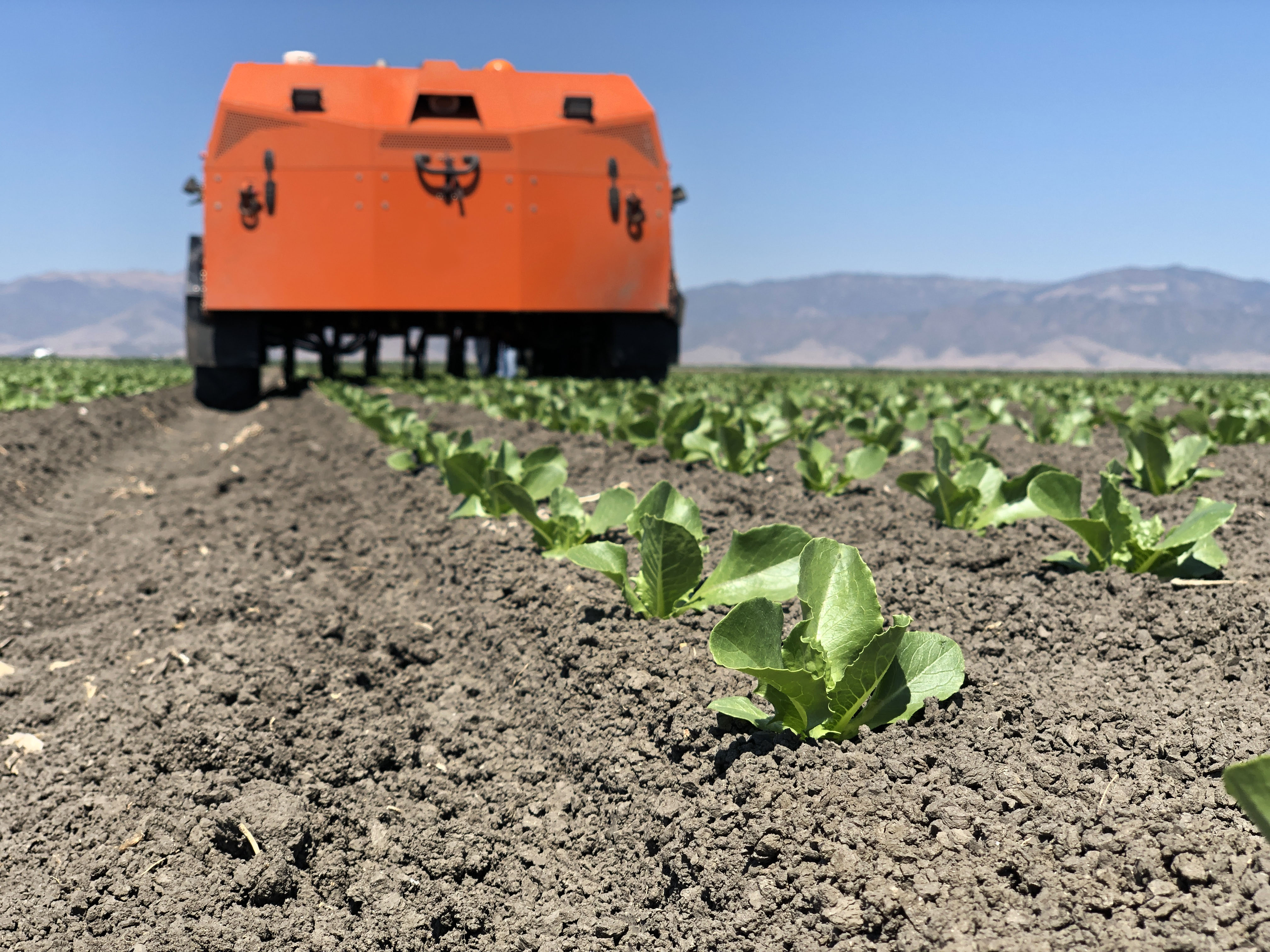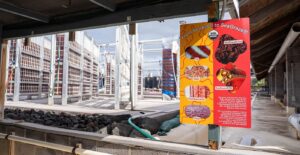There are a number of robotics startups in the ag space targeting a variety of pain points throughout the supply chain and many of them have caught Silicon Valley’s eye. One of the biggest drivers of robotics innovation in agriculture is the serious labor challenge facing farmers including a shortage of workers as well as the increasing cost of labor in developed markets for the dull, dirty, and dangerous jobs that are crucial to food production. The need for labor solutions isn’t unique to the agriculture industry, but the business case may be the most appealing.
FarmWise, a San Francisco-based startup developing AI-powered weeding robots, has just raised $14.5 million in Series A funding, to answer some of these needs.
“I think agriculture has a lot to gain from robotics. I expect to see an increasing level of VC interest for ag-specific robotics solutions more so than in other industries,” Sebastian Boyer, co-founder and CEO, of FarmWise told AFN.
The round was led by Calibrate Ventures alongside Wilbur Ellis, Xplorer Capital, and Alumni Ventures Group. Its AI-powered weeding robot provides personalized care to every plant it touches, according to the company, using machine learning modules, computer vision, and high-precision mechanical tools.
Wilbur Ellis’ venture capital arm, Cavallo Ventures, invested in the round, not because of the cool, cutting-edge angle that farm robots tend to conjure. The play was a direct response to farmers’ input.
“When our PCAs (pest control advisers) are advising growers, the number one question we get is, ‘My labor cost is through the roof, is there anything you can do for us?” Amar Singh, director of Cavallo Ventures, told AFN. “We are an agronomy company, not a labor contractor but at the same time we exist to serve the needs of our customers and time and time again, especially in specialty crops, this has been the recurring theme. To solve that, we look for who has the domain expertise, the technical expertise, and the determination to put a product together and that’s what brought us to FarmWise.”
FarmWise’s team is comprised of farming and AI experts from prestigious institutions like MIT, Standford, and Columbia. To date, it claims that its robot has removed weeds from 10 million plants and that each robot is capable of weeding crops to feed a medium-sized city of roughly 400,000 people.
“With the new funding, we will start commercializing our products in California and Arizona over the next two seasons. We provide our product as a service model, so scaling that service is the first use of the funding,” Boyer says. “The second is to develop new capabilities on our machine. From day one, we built our product as a platform more than anything else. We will build technologies that can scale not only across crops but also across many different types of applications within those crops.”
Plants are delicate, however, and the notion of a metal robot rummaging through a specialty crop field may send chills down some farmers’ spines. But the technology’s foundation is built on the need to understand plants on an individual level. A range of sensors capture information about every single plant while a suite of algorithms and real-time data processing make sense of it. Combined with its robotics platform, FarmWise’s robot is able to weed the weeds while leaving the cash crop intact.
“Our approach was to work with growers from day one before we even had a prototype. Itw as a challenge to iterate fast enough. We would test on the field once every other week or month and quickly realized that we needed a lot of iterations and that we could spend all the time in the lab doing theoretical research, but it’s not going to be as valuable as one or two hours spent in the field,” Boyer explains.
Next to iterating quickly enough, finding talent has also been an obstacle for the startup. Although ag robotics is defining itself as a here-to-stay segment, some are finding the boom of self-driving cars a sexier endeavor. Boyer isn’t worried about autonomous vehicles’ glitz and glamor, however. He’s relying instead on innovators’ frequent lack of patience.
“A lot of engineers we meet and talk with have been disappointed by the time it takes to commercialize self-driving cars. Many of them realize it will take four-to-six years to actually change something in the real world whereas we have a much quicker development cycle. We are live on the field today and can improve upon a product that is already creating value for customers,” he says.
The lack of patience rings true for the VC side of the equation, as well, Singh notes. The typical time horizon for a Silicon Valley investor often fails to match up with the time horizon that agrifood tech innovations require.
“To really get something going in ag you need patient capital with domain expertise in a narrow but deeply consequential domain,” Singh explains. “If you’re looking at the adressable market size, it’s 10’s of billions of dollars, but does the capital base have the patience to deploy cash and stay patient and stick with the founders? There are very few funds who actually have that. A lot of investors come from this notion that you can flip this in three years or four years. That’s just not going to happen, at least not if you want to move the needle in this space, not just deliver brownies to people at 11 p.m.”




